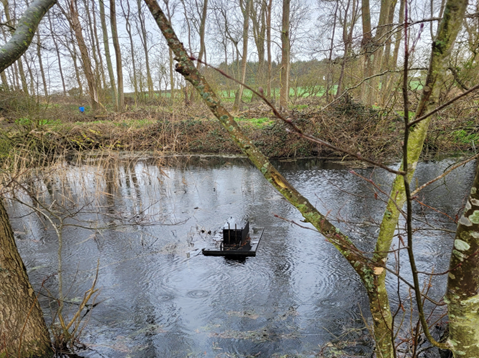Farming in Protected Landscapes Case Study:
Control of American mink

Over the period 2022-2024, a grant of £51,807 is being provided to Waterlife Recovery East to control the invasive American mink in the Coast & Heaths waterways to protect native wildlife. Smart mink rafts are used as a more humane way of trapping the mink.
American mink are accomplished predators which are not native to the UK. Without control, they would breed and numbers would quickly grow so that they would decimate populations of native wildlife, particularly endangered species such as the water vole.
Mink raid the nests and kill birds around our waterways such as kingfishers, lapwings and sand martins, and are brave enough to tackle species much larger than themselves.
The water vole population in the UK is down by 20% over the last 20 years mainly due to predatation by mink.
How will this be done?
The project aim is to remove invasive American mink from the Suffolk & Essex Coast & Heaths National Landscape and the river catchments that feed its rivers, then subsequently removing any mink that immigrate from the west. Mink removal is accomplished using smart traps placed on rafts which allow effective, humane mink control.
Any mink trapped are despatched with an air rifle, and their carcass is retained for scientific examination and analysis, including age determination and DNA profiling.
A smart trap comprises a cage trap fitted with a Remote Monitoring Device (RMD) which sends a text and email message to nominated recipients, facilitating a rapid response and obviating the need for daily trap visits or for leaving mink trapped while they wait for a scheduled check visit.
Each raft is managed by two people, with a coordinator providing backup and ensuring that every trap activation is attended to. Waterlife Recovery East works with numerous conservation organisations, water and land management agencies and farming and wildlife groups.
It brings together professionals and volunteers who control American mink in their own areas, enhancing their effectiveness through better strategic coordination, mutual support and collective fundraising.
How successful is this project?
Very successful – only five mink have been trapped this year in Suffolk, from 11 the previous year despite careful placement and mapping of the locations of the rafts. These have been identified as having migrated into the area rather than being born here, indicating that numbers are practically nil as we work towards the end of the project.
If you have seen a mink, please let us know and if you would like to learn more about the work of Waterlife Recovery East, perhaps even become a volunteer please visit their website.
